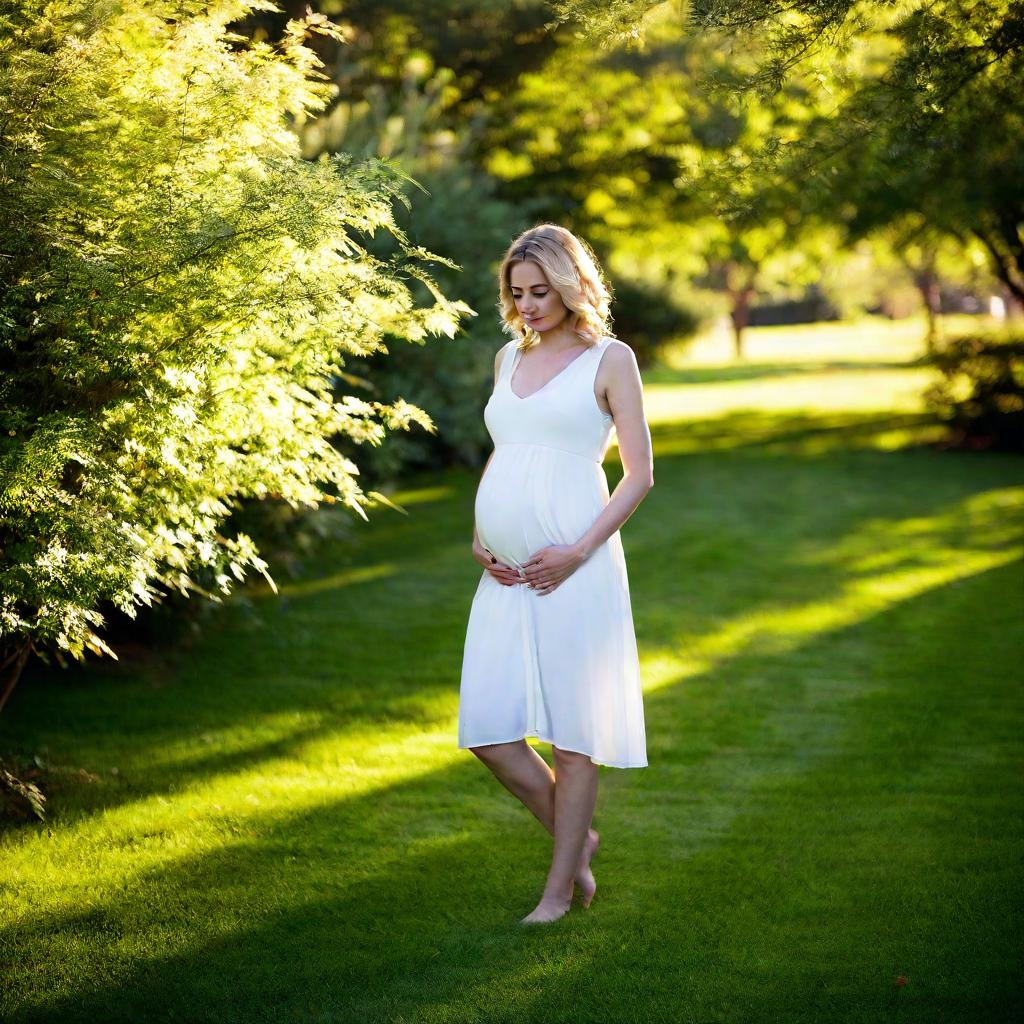Babywearing, the practice of carrying an infant in a sling or another form of carrier, is a tradition that transcends time and culture, offering numerous benefits both practical and emotional. Though it may seem like a modern parenting trend, babywearing has ancient roots that reflect the fundamental need for connectivity and closeness between parent and child.
The historical background of babywearing is deeply intertwined with the day-to-day life of communities around the world. In various societies, from the nomadic tribes of Africa to the indigenous peoples of South America, carrying infants close was not just a means of transportation—it was an essential aspect of infant care. This practice allowed caregivers to keep their babies safe while remaining productive members of their community. Whether wrapped in intricately woven textiles or nestled in similarly supportive devices, babies were integrated into the rhythm of daily activities, fostering emotional bonds and security.
Fast forward to the present day, babywearing has experienced a remarkable resurgence, capturing the attention and hearts of modern parents searching for ways to maintain closeness in a fast-paced world. This revival is more than just a nod to the past; it's an adaptation of timeless wisdom to meet contemporary parenting needs. Various cultures have contributed richly to the tapestry of babywearing techniques, each offering unique methods that prioritize the well-being of both child and parent.
The cultural significance of babywearing today lies in its ability to strengthen the emotional connection between the caregiver and the child, ensuring emotional reassurance and a sense of belonging. This reconnects parents with the parenting practices of their ancestors while addressing current desires for eco-friendly, flexible, and adaptable child-rearing solutions. Recognized by many pediatricians and parenting experts as a valuable tool, babywearing supports both the physical and emotional health of families. It aids in nursing convenience, promotes physical development, and can even reduce crying and colic episodes by nurturing a secure attachment environment.
- Reduced crying episodes: Close physical presence is incredibly comforting to infants, reducing the frequency and duration of crying and colic. The warmth and gentle rocking motion experienced when being carried mimic the sensations of the womb, creating a familiar and soothing environment.
- Enhanced physical development: Babywearing promotes physical development, notably improving muscle strength and coordination as babies are gently swayed during movement. This non-invasive support aids their growing bodies in adapting to the world outside the womb.
Embracing the nurturing aspect of babywearing also provides multiple advantages for parents, creating a harmonious balance between caregiving and personal fulfillment. A primary benefit is the hands-free convenience, enabling parents to maintain productivity, whether at home or on the go, without sacrificing the closeness their infant needs. The ability to go about daily tasks with freedom and ease, from grocery shopping to merely enjoying a stroll in nature, is a treasured aspect of this practice.
- Ease of breastfeeding: Many babywearing devices are designed to support breastfeeding, allowing mothers to nurse discretely and comfortably from virtually anywhere. This on-demand accessibility not only supports the baby's nutritional needs but amplifies maternal confidence in nurturing their child.
Such heartfelt connections and practical support exemplify how babywearing seamlessly integrates into contemporary parenting. By choosing the style and method that best suits your lifestyle, the timeless tradition of babywearing transcends simple functionality, evolving into a cherished manifestation of care and connection between mother and child. Through these bonds, many parents find themselves in a transformative journey, cradling the blooming relationship with their child.
Delving into the physical and emotional benefits of babywearing reveals a myriad of enriching experiences for both infants and parents. At the heart of infant care, babywearing fosters a significant emotional tract—enhanced bonding. Carrying your baby close encourages skin-to-skin contact, promoting the release of oxytocin, often referred to as the 'love hormone.' This natural process not only strengthens the bond but establishes a framework for emotional security, allowing babies to feel safe and cherished in their caregiver’s embrace.
When selecting a baby carrier, it’s important to consider several essential factors that contribute to both safety and comfort elements vital for nurturing the well-being of both parent and child. Ensuring ergonomic support is crucial, as it promotes proper hip and spine alignment in infants, essential for healthy growth and development. Adjustable settings in all carriers allow them to accommodate your child’s progress, ensuring that both the caregiver and baby are comfortable at all times.
Safety is paramount, so selecting carriers that have passed rigorous safety testing standards ensures peace of mind. Look for carriers that offer secure buckles and straps, along with sturdy fabric that is free from harmful chemicals, to keep your child safe and cozy.
Selecting the right carrier means finding a balance between practicality and personal aesthetic. Consider options that are machine-washable for easy maintenance. Additionally, choose designs that feel natural in your everyday life, seamlessly blending into your lifestyle both at home and on outings. Colors and styles that resonate with you can make babywearing a joyfully personal experience.
Ultimately, the choice of carrier should reflect the unique needs of you and your baby, creating a supportive conduit for this tender phase of development. As you cuddle your baby close, whether using a wrap, sling, or structured design, this nurturing act not only provides comfort and connection but imbues everyday moments with profound intimacy and purpose.
As you navigate the journey of babywearing, understanding and adhering to safety guidelines is crucial to nurturing your child's health while fostering a close connection. Ensuring your baby's safety while using a carrier is a vital aspect of the experience, offering both you and your baby peace of mind as you move through your daily routines.
A key aspect of babywearing involves understanding the correct positioning and fit for your baby. You want to ensure that your baby is held snugly and securely—close enough for you to kiss the top of their head, which signifies they are positioned correctly against your chest. Proper alignment of the baby's hips and spine is also essential; their legs should form an 'M' shape, with their knees higher than their bottom, supporting healthy joint development.
Adhering to the T.I.C.K.S rule—a safety standard recommended by babywearing experts—can guide you towards safe and comfortable wearing practices:
- Tight: The carrier should hold your baby close, providing support and ensuring they are comfortably secure.
- In view at all times: Your baby’s face should always be visible, allowing you to monitor their breathing and expression.
- Close enough to kiss: The easy reach for gentle kisses shows that your baby is positioned at an appropriate height.
- Keep chin off the chest: Maintain an open airway by ensuring your baby's chin is never pressed against their chest, promoting unobstructed breathing.
- Supported back: Ensure your baby’s back is well supported, allowing them to naturally curl into a position that closely mimics their womb posture.
For new parents seeking further guidance, turning to credible resources can facilitate informed and confident use of babywearing equipment. Organizations such as the Baby Carrier Industry Alliance (BCIA) offer a wealth of information, providing up-to-date guidelines and support for selecting and safely utilizing a baby carrier. Their expertise can bolster your knowledge, allowing you to focus on the joy and connection that babywearing brings without concern for safety oversights.
Additionally, consulting with pediatricians or attending babywearing workshops can be invaluable. These platforms provide personalized insights and support, ensuring you feel well-equipped to nurture your baby securely. The journey of babywearing, when informed by trusted resources and guidelines, becomes a cherished part of your parenting story—a gentle, reassuring embrace as you and your baby grow together.
To help you get started with babywearing, we've gathered a step-by-step guide for using different types of carriers while troubleshooting common challenges you might encounter along the way. This journey with your little one can be a rewarding experience filled with warmth and connection.
- Wraps: Begin by finding the center of the wrap, often marked with a tag. Hold this part against your chest as you drape the fabric over your shoulders to form an 'X' on your back. Bring the fabric to the front of your body, move it beneath your arms, and cross over your chest to form a snug 'X' for baby. Slip your baby into the pouch created in front of you, ensuring they are seated in a deep 'M' position. Adjust the fabric to support their neck and back, keeping them close. Ensure the wrap is tight but not restrictive, allowing for comfort and security during every step.
- Common Issues with Wraps: If the wrap feels too tight or your baby seems uncomfortable, try loosening the fabric slightly and adjusting the position by lifting your baby gently while redistributing the material evenly over their body. Pull the edges of the wrap outward to ensure that your baby's back is well-supported without excess slack.
- Slings: For ring slings, thread the tail of the sling fabric through both rings, then back under one ring to secure it. Place the sling over one shoulder, creating a pouch for your baby on the opposite hip. Position your baby upright against your chest, with legs in the frog position, knees tucked slightly higher than their bottom. Gently pull on the fabric tail to adjust and snugly fit the sling around your baby's back and neck, offering ample support.
- Common Issues with Slings: If the sling feels uneven or your shoulder becomes sore, adjust the rings to sit slightly below your collarbone and check that the fabric is evenly spread across your shoulder. Redistribute weight evenly across your back by spreading the fabric wide, preventing pressure points.
- Soft-Structured Carriers: Start by securing the waistband of the carrier around your waist so it sits snug on your hips. Place your baby on your chest, tucking their legs through the designated openings. Bring up the panel of the carrier to cover their back while securing the shoulder straps. Ensure that both the waist and shoulder straps are properly buckled and adjusted for a snug but comfortable fit. Regular checks for ergonomic positioning—like the supported 'M' shape for legs—are essential to your baby's comfort and safety.
- Common Issues with Soft-Structured Carriers: If the carrier feels unbalanced or becomes uncomfortable, recheck all straps for tightness and even distribution. Adjust the shoulder straps to ensure the weight is spread evenly across your back, minimizing any strain. Sometimes, altering the strap positions or re-tightening ensures better load distribution.
When troubleshooting these common challenges, remember that patience and practice can transform babywearing into a skillful art that enhances both your experience and your baby’s comfort. Facing these issues with a nurturing attitude defines parenthood's teaching moments, allowing closeness with your child to guide you. As you acclimate to these techniques, you develop a harmonious routine, enriched by every heartbeat shared. Engaging with babywearing communities online or attending workshops can further deepen your understanding and confidence, creating a foundation of love and support in your daily rhythm.
In the realm of babywearing, many myths and misconceptions can cloud the judgment of new parents, leading to unnecessary worry. One common misconception is that babywearing may contribute to hip dysplasia. However, research offers reassuring insights that, when done correctly, babywearing supports healthy hip development. The key is ensuring your baby is positioned in the ergonomic 'M' shape, where their knees are higher than their bottom, thereby promoting proper joint alignment and growth.
Another frequent concern surrounding babywearing is the risk of overheating, especially during warm weather. Some parents fear that carrying their baby close might lead to discomfort or overheating. Fortunately, baby carriers today are designed with these concerns in mind, utilizing breathable fabrics and ergonomic designs that keep both parents and children cool and comfortable. Opting for carriers made from lightweight, breathable materials ensures adequate ventilation, preventing overheating even as temperatures climb.
- Myth of overstimulation: Some worry that babywearing leads to increased overstimulation for babies, given their heightened interaction with the environment. Current studies, however, suggest that being close to a caregiver can actually help an infant filter overwhelming stimuli, with the parent's body providing a sense of calm that modulates exposure to new sensory inputs.
- Misconception of dependency: There's a notion that frequently wearing your baby can foster unhealthy dependency. In reality, studies show that cultivating secure attachment through practices like babywearing helps foster self-confidence and independence in the long term, as children feel assured by the reliability of their caregiver's presence.
Understanding these nuances helps dispel fears that may accompany such misconceptions, easing the minds of caregivers. Awareness and knowledge of safe babywearing practices empower parents, enabling them to focus on the joys and benefits of this nurturing tradition. Consulting trusted sources and reputable experts can provide clarity and assurance, allowing parents to appreciate the deep connection that babywearing fosters, comforted by the knowledge of its safety and beneficial impact.
For parents embarking on or continuing their babywearing journey, listening to both instinct and evidence is key. Recognizing myths as opportunities for deeper learning and exchange helps cultivate a supportive community, both for the families and the wider parenting circles they connect with. As we embrace these practices, the understanding and reassurance we gain create a nurturing space where bonds can flourish under the gentle sway of understanding and care, echoing the rhythm of shared life journeys.
Embracing the versatility of babywearing, new mothers can gently integrate this practice into everyday life, finding harmony between nurturing their child and pursuing daily activities. Picture yourself swaying gently to music while settling a fussy newborn, or engaging in a soothing dance that doubles as a workout, with your baby comfortably snuggled against your chest. Babywearing offers a new dimension to familiar routines, turning the ordinary into extraordinary by keeping you connected to your little one.
Household chores, often the domain of timely necessity, can transform into moments of connectivity and tenderness. With your baby held securely in a wrap or sling, you can sweep the floors, fold laundry, or tend to plants while offering your little one a comforting close presence. The rhythm of these daily tasks can create a calming effect, allowing your child to sense the comfort in everyday life’s gentle movements.
The outdoor world, too, invites opportunities for bonding and exploration as babywearing opens new avenues for shared experiences. Picture a serene stroll through the park or a lively farmer's market visit with your baby experiencing the sights and sounds nestled safely against you. Whether you’re catching up with friends at a café or enjoying a family picnic under the sun, babywearing allows for seamless transitions into the social world, with your baby cradled in soft security.
Beyond the confines of typical routines, let your imagination fly and consider creative ways to embrace babywearing. Join a yoga class tailored for mothers and their infants, where gentle exercises can be performed with your baby in a carrier, enriching the bond through mindful movement. Alternatively, imagine yourself attending a community gathering, your hands free to engage while your baby remains content and comfortable against you, part of the shared social experience yet cocooned in parental closeness.
In exploring these diverse applications of babywearing, remember that flexibility is both an ally and guide. There’s no strict script to follow; instead, the emphasis is on adapting this practice to suit your own pace and comfort. Trust in the intuitive nature of your parenting instincts and let babywearing be a natural part of the unique rhythm you share with your child. This supportive connection not only aids in your baby’s growth and development but also fosters a nurturing environment where creativity and practicality unite in the dance of life shared.
As you continue on this journey, embracing both the challenges and rewards, let babywearing serve as a gentle anchor, facilitating love and connection as you navigate the beautiful complexities of motherhood with confidence and warmth.
Enveloping your child in a gentle embrace through babywearing can become one of the most enriching experiences in your parenting journey, creating a harmonious synergy between your heartbeats and rhythms of life. As you walk this path together, the physical closeness fosters a deep sense of security and continuity that contributes profoundly to your child's emotional development and well-being. This bonding doesn’t just momentarily soothe your baby but plants the seeds for an enduring connection that grows alongside them.
Through the comprehensive embrace of babywearing, love transcends beyond words, becoming a tangible presence that supports your child's growth. This ongoing closeness alleviates stress, guiding your baby through the world with your heartbeat as a compass, enveloping them in warmth that fosters confidence and curiosity. The cycle of carrying, comforting, and connecting becomes a seamless quilt of shared moments that nurture your child’s innate sense of belonging. Over time, this trust and reliability build an empowering platform for developing independence and self-assuredness, offering lifelong benefits that will reflect in resilience and emotional intelligence.
For parents navigating this tapestry of attachment and growth, trusting your instincts is vital. Embrace your internal compass—a silent guide rooted in intuition and empathy—that lights your path amid the nuances of motherhood. Allow it to ebb and flow with each development phase, adapting to your baby’s evolving needs and your understanding of them. These instincts, paired with a willingness to learn and adapt, create a nurturing environment for your child, underpinning their explorations with love and consistency. As you grow into this role, welcoming new knowledge from credible resources and communities can enrich your interactions, providing insightful perspectives as your baby reaches new milestones.
Practical adjustments to your babywearing approach will naturally follow your child’s pace and the changing seasons of growth. The journey is unique for each family, with ebbs and flows that make every step precious in its distinctness. As you venture through each day, remember there are many forms of support available to enhance this beautiful collaboration with your child. Engage with communities and experiences, be it online gatherings or neighborhood workshops, as they offer camaraderie and wisdom that illuminate the many facets of parenthood.
At the core of this shared experience, babywearing becomes a dance of comfort and discovery, a shared adventure that resonates with warmth and promise. It is not merely a parenting practice but a celebration of the profound love and communication exchanged between you and your child. As you continue to navigate these serene and, at times, challenging waters, may you find joy in each gentle sway and step, harmonized by an enduring bond that thrives on tenderness, intuition, and an ever-growing tapestry of shared experiences.


















